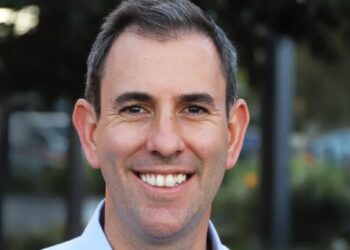One area of concern is the use of the segregated method for claiming ECPI, Accurium’s consulting actuary Doug McBirnie told SMSF Adviser.
The segregated method allows funds to claim ECPI on assets that are solely supporting pensions, he noted, provided that their value does not exceed the pension account balance.
“If using the segregated method, there is no requirement for an actuarial certificate. All of the income earned on the segregated pension assets is exempt from tax and any capital gains or losses are disregarded,” Mr McBirnie said.
The ATO has now clarified that this method can only be used for the entire financial year, Mr McBirnie said.
“The ATO is concerned that many funds are using the segregated method where pensions are started part-way through a financial year. Assets can only be segregated current pension assets when they are segregated for the entire financial year. Otherwise, the unsegregated method must be used and an actuarial certificate obtained in order to claim ECPI,” he said.
The ATO has also reiterated its view that declaring ECPI is not something trustees can opt out of.
“Many SMSF practitioners have been of the opinion that, where the cost of obtaining an actuarial certificate and claiming ECPI is likely to outweigh the tax saving, trustees can opt to pay the tax instead,” Mr McBirnie said.
“The ATO has now clarified that this is not an option. Where a fund has pension accounts at any point during a financial year it must report any associated ECPI in the annual return. Where funds are using the unsegregated method the trustee must obtain an actuarial certificate prior to lodgement.”



It is unfortunate where the amount of tax to be saved is (say) $50 but the Trustees must pay $120+ in order to make this saving…
The segregation issue means a change of habit required for many administrators.
[quote name=”Ralph”]
What an arsehole,what does ATO do in return for the charges and all these so called agencies/professionals involved on top of each other put a big disclaimer absolving themselves from any liability whatsoever,so what is the sanctity of their role?
what a loot:
1.Ato fee
2.Accounts
3.audit
4 Actuary
5.penalties
In return for:
1.a part of your earnings being forced in to the hands of swindlers,At least in private sector employers negotiate contract arte/salary inclusive of super which means effectively there is no additional payment.
2.a nominal rate of tax rebate? Burden of self funding pension
Is it worth?
As you can get a certificate for $150.00, which is half the cost of the ATO levy, it is hardly a massive financial strain. If the SMSF cannot afford to pay for an Actuarial certificate, how can it afford to pay the fees and commissions required to run it?
DavidL, I have had one fund that was in a tax loss position but if they obtained an actuarial certificate then they would have had taxable income. Therefore not only would they have to pay tax they also had to pay the cost of the certificate. It might not of been much but these particular clients were in financial difficulty so every dollar counts for them. I also have another fund that has significant carried forward tax losses. The losses are reduced regardless of whether ECPI is claimed or not. Why bother paying for something that is of absolutely no benefit? I agree with Cam. So did Aaron Dunn before the ATO announced this view. I know this because I did some research prior to completing the above mentioned funds and his blog was the only place I could find anything at all about it.
How much are people paying for actuarial certificates if the cost of obtaining one is outweighing the tax savings or putting a burden on the fund?
I think the ATO should reconsider its view that getting an actuarial certificate is compulsory if a fund has a member account in accumulation mode and pension mode at the same time. I saw a fund a few years ago where the main asset was business property. The business had suffered in the GFC and wound up, leaving the SMSF property untenanted. The fund had made a loss. It seems harsh to add the cost of an actuarial certificate to the family.
where does that leave a SMSF that commenced during the year, and has been 100% in pension mode? It is therefore using Segregated method, but NOT for the “entire financial year”